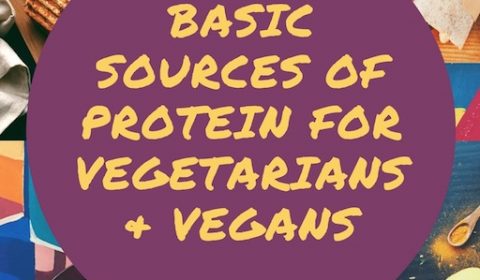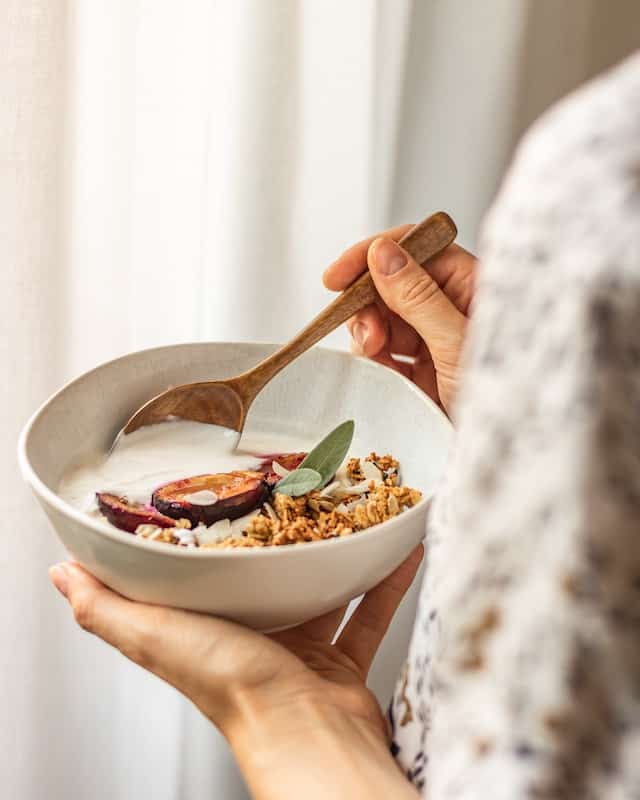What is Vegan Protein Sources?
First, protein is a nutritional requirement which is made of small "boxes" called Amino Acids. Proteins build new cells, maintain tissues and synthesize new proteins, in order us to perform in our daily various jobs. Protein helps with our eye vision, hair and fight disease.
The latest years, the advent of the people that turn to a Plant-Based diet is growing. There is a misconception that the Vegetarian and Vegans are lacking Protein sources which are absolutely wrong. As you can on the above chart you have a lot of choices to choose your protein. Make sure that you include different varieties in your meal.
Most vegetables contain the best protein for vegans, this is a fact. You can find below other additional sources of Protein:
Kale - 1 cup - 0.7 g.
Mushrooms - 1 cup - 3.9 g.
Asparagus - ½ cup - 2.2 g.
Cauliflower - 1 cup - 2.1 g.
Squash - 1 micron - 0.4 g.
Parsley - 1 teaspoon - 0.1 g.
Sweet corn - 1 cup - 4.7 g.
Except for the mentioned vegetables, there are other greens and sources that contain Protein also. You can find more on the table below. I will also explain further the use of those foods and how to cook them.
Wholes Foods - Vegan Protein Sources and best protein sources for Vegetarians
Vegetables
You can use them in salads, bake them (it depends on the vegetable) or even fry them (In many Asian countries). Also, you can make delicious smoothies as the following:
Legumes, Beans, Lentils and Peas - Foods with complete protein
There are a lot of Varieties of beans, lentils, legumes and beans. In every country, you can find a different variety of the yellow, green colour lentils in India to brown colour lentils in Greece. Each one of them has a different taste, way and time of cooking.
The culinary uses can vary. Regarding beans, you can cook, spout them, use them in salads, soups, sauces, dips or in delicious vegan burgers. Moreover, you can use them in a lot of sweets and as gluten-free flour.
You can find a few examples of high protein vegans foods here:
Chickpeas with spinach and sun dried tomatoes
Vegan Creamy broccoli soup with baked onions
Nuts & Seeds - non meat protein sources
They are high in protein and you can use them in of a lot of culinary uses. In milk, sauces, salads, desserts, rice dishes, make a flour and no - dairy cheeses. You can use these nuts in a wide range of Raw dishes, especially as a base for the raw desserts. A few amazing recipe examples, using nuts are the following: (Also protein options for vegetarians)
Vegan, Raw & Gluten-free Chocolate truffles
Vegan Chocolate & Coffee Cheesecake
Processed Foods - Vegan Protein Sources
Tofu.
It is a food made by coagulating soy and then pressing into blocks. It is believed that is invented by the Chinese.
Two are the categories of Tofu, firm and silky tofu. Firm tofu you can season it, marinate it, fried, bake it which makes an excellent alternative to meat, in Vegan cuisine. My favourite is the Baked Tofu. The silk tofu can be used for creamy desserts, smoothies and sauces.
Be careful to use only organic one, as Tofu can be mutant food. While I was in Sri Lanka I had attended a cooking class and we have been informed that we should limit the use of Tofu because nowadays you hardly find original, organic Tofu. If you want to learn more about Tofu you can watch an informative documentary Here
Easy Recipe for Baked Tofu - Protein vegan diet with protein vegan foods:
5 - 6 slices of firm tofu
1 small cup soy sauce or tamari
2 tablespoon garlic powder
2 tablespoon onion powder
1 tablespoon agave syrup or any other syrup you wish
1 tablespoon black pepper
Stir the garlic, onion, tamari, pepper and the agave syrup and pour over the tofu slices. cover and leave them for 1 hour. Bake them at 180 degrees until golden on both sides.
Enjoy!
Tempeh - A complete Vegan protein
Tempeh is originated in Indonesia and is a high protein food, rich in flavour and easy to digest. Actually, it cooked soybeans, pressed together into a fermentation process. You have to cook it first prior to any use, otherwise, it will be bitter in taste and dry in texture. The best way of cooking is to simmer it in flavoured broth so it becomes moist. Then you can bake it, fry it, cut it in salads, use it is sandwiches and much more.
Seitan - A complete Vegan Protein
Seitan is made gluten and has a flavour similar to meat. In order to make you have to rinse and wash whole grain flour or but the ready mix one. You can bake, fry, and steam it. In addition, you can blend it, season it and make vegan burgers or "meatballs". Personally, I made it once and I did not really enjoy it.
Packaged meat substitutes - Alternatives of Vegan Protein sources
These substitutes are soy, wheat or peas proteins and you can find them frozen or chilled. Generally, these products are processed and you can not consider them as your base in your Vegetarian / Vegan diet. Make sure you read the labels correctly. Personally, I never tried them as I consider them a fake food.
The bottom line is that until you learn how to include the proteins efficiently in your diet, can be a little tricky and time-consuming. The most important is to have fun, start exploring with recipes and soon you will feel comfortable with any kind of protein. If you are new to Vegetarian and Vegan diet, start step by step and not all at once. For example, in case you eat meat 3 times a week, cut it to once a week for 1 month or longer and replace the other 2 with Plant-based alternatives. Slowly you will feel great with the transition but it takes time... In the beginning, you might gain weight (that's what happened to my case, everybody is different) but after a while, you will start losing it automatically with not much effort.
Note 1: There are two types of Vegetarians, those who do not eat any kind of meat, fish, dairy, honey and generally the foods that contain animal products (so-called and Vegan), and those who do not eat any kind of meat and fish but eat all the rest.
Note 2: Personally I am a Vegan.
Reasons for being Vegan
The reason I started was neither for losing weight nor for "fashion" reasons as many people think. The first reason is that I saw a huge difference to the symptoms of my monthly menstruation. I had read that it helps, but I did not believe at all. I started my experiments and the second month I felt another person! Side note: I had a serious problem, like vomiting during the first 2 days, 10 days before large swellings and pains (especially in my chest), generally I was really suffering, it was a nightmare and I was handling it with pills. So I started testing out with vegetarianism. The second month I saw a huge difference! No vomiting, no pills, no serious pains and no swelling!!! oh, lala! I thought it was just a coincidence and nothing more. I went back to my old habits. As you understand the symptoms returned. The experiment continued for about 1-2 years where I was on / off in Veganism until I concluded that in fact, Vegetarianism is the only solution to my problem! So for three months now I have completely cut meat, fish and very rarely I eat eggs and dairy.
The second reason was that after long study on Veganism, animal rights, studies I decided to turn into Vegetarianism. Knowledge is power! More in another post.
Note 3: The above article is the result of my personal study, try and errors and my studies in respective Plant-Based Cuisine, Vegan Patisserie and in Anatomy & Physiology in Canada and England. I am neither a doctor nor a dietician.
Hope you enjoyed these high protein foods for Vegans!















Daksh Mehta
I'm really appreciate your content because I'm looking for that type of article and I found your article. This is one of the great article ever.